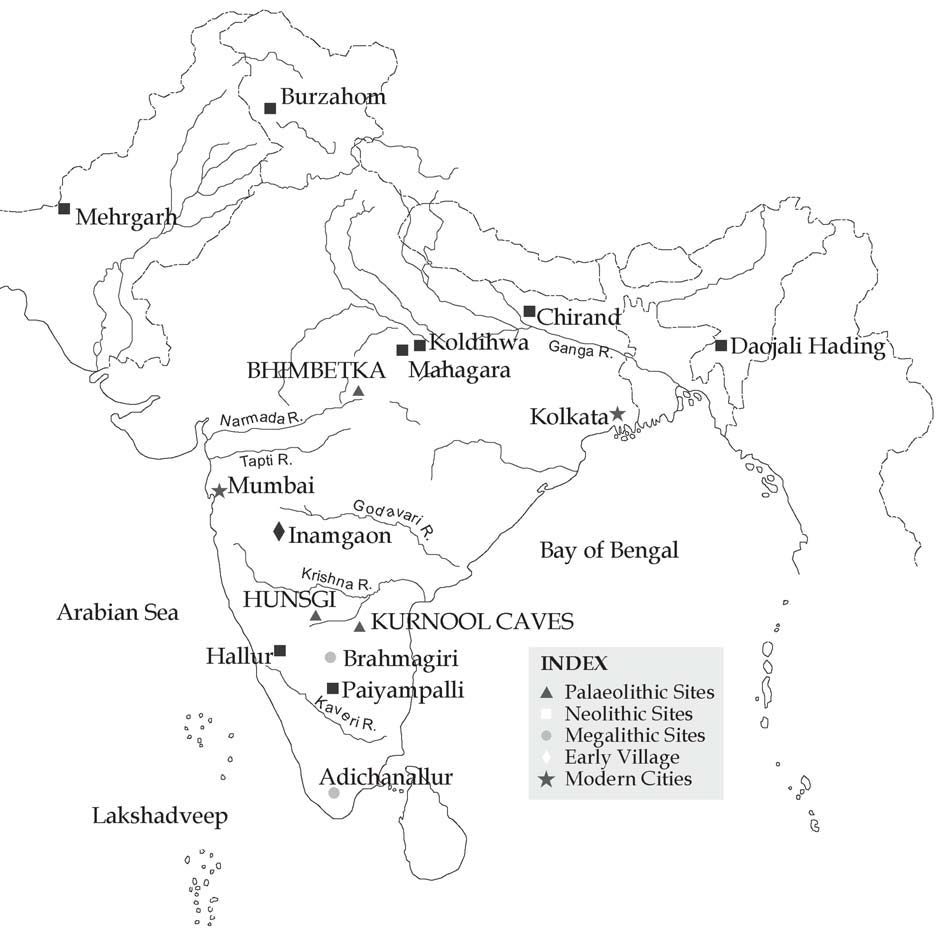Wooden Artifacts of Stone Age | 28 May 2024
Why in News?
Recently, research has challenged the traditional view of the Stone Age, suggesting it might be more aptly described as the 'Wood Age'.
- This perspective arises from the discovery and analysis of wooden artifacts dating back 300,000 to 400,000 years in Schöningen, Germany.
- Recently, the discovery of prehistoric artifacts at Ghugwa, Madhya Pradesh suggests that ancient hunter-gatherers utilised fossil wood to fashion tools, estimated to be over 10,000 years old, comprising mid-sized flakes and microliths found in the same area.
Note
Human presence in India and Germany stretches back millennia, with stone tools dating to 1.5 million years in the Narmada Valley and 800,000 years in the Rhine Valley, respectively.
How Wooden Tools Challenge Ideas of the Stone Age?
- Sophisticated Wooden Tools: The artifacts exhibited a diverse range of woodworking techniques beyond simple sharpened sticks.
- Insights into Early Human Behaviour and Capabilities: The unearthing of ancient hunting tools challenges the perception of prehistoric humans as mere scavengers, revealing their strategic hunting, planning skills, and technological adaptability through tool repair and reuse.
- Preservation Bias: Research highlights a bias in archaeology towards preserving stone over organic materials, which may distort our understanding of wood's importance in prehistoric times, despite well-preserved wooden artifacts revealing its crucial role.
What is the Stone Age?
- The Stone Age began when hominids first picked up stone tools, some 3.4 million years ago (mya), in modern-day Ethiopia. This period, which went on till about 6,000-4,000 BP (Before Present), comprises 99% of human history.
- Stone Age in India: India's varied land, water, plants, and animals helped people live all over except in the Himalayas and the Indo-Gangetic plains during the Stone Age. The Stone Age is divided into three main periods namely the Paleolithic, the Mesolithic, and the Neolithic. Further, the Indian Palaeolithic is divided into three developmental stages:
- Lower Palaeolithic (600,000 years BP to 150,000 years BP): It involved the use of large pebbles or flakes for making choppers and chopping tools, hand axes, cleavers, knives etc. The Lower Palaeolithic has two cultural traditions:
- Soanian pebble-tool tradition
- The Peninsular Indian handaxe-cleaver tradition.
- Middle Palaeolithic (165,000 BP to 31,000 years BP): It is based on the use of a variety of flakes struck from cores for preparing scrapers, points, borers and other tools.
- Upper Palaeolithic (40,000 years BP to 12,000 years BP): In this phase, improvements included making various types of tools like blunted blades, penknife blades, blades with serrated edges, and arrow points from long parallel-sided blades using a punch technique.
- Lower Palaeolithic (600,000 years BP to 150,000 years BP): It involved the use of large pebbles or flakes for making choppers and chopping tools, hand axes, cleavers, knives etc. The Lower Palaeolithic has two cultural traditions:
- Mesolithic Culture: During this era, people inhabited semi-permanent and temporary settlements, utilised caves and open areas, practised burial rituals, demonstrated artistic abilities, maintained cultural continuity, and utilised microlithic tools for hunting smaller prey.
- Neolithic period: It marked the beginning of agriculture and animal domestication.
- Early evidence of Neolithic culture is found in the Fertile Crescent region of Egypt and Mesopotamia, the Indus region, the Ganges Valley of India, and also in China.
UPSC Civil Services Examination, Previous Year Question (PYQ)
Prelims:
Q. Consider the following pairs: (2021)
(Historical Place) (Well-known for)
- Burzahom : Rock-cut shrines
- Chandraketugarh : Terracotta art
- Ganeshwar : Copper artefacts
Which of the pairs given above is/are correctly matched?
(a) 1 only
(b) 1 and 2
(c) 3 only
(d) 2 and 3
Ans: (d)
Q. Which one of the following is not a Harappan site? (2019)
(a) Chanhudaro
(b) Kot Diji
(c) Sohgaura
(d) Desalpur
Ans: (c)


